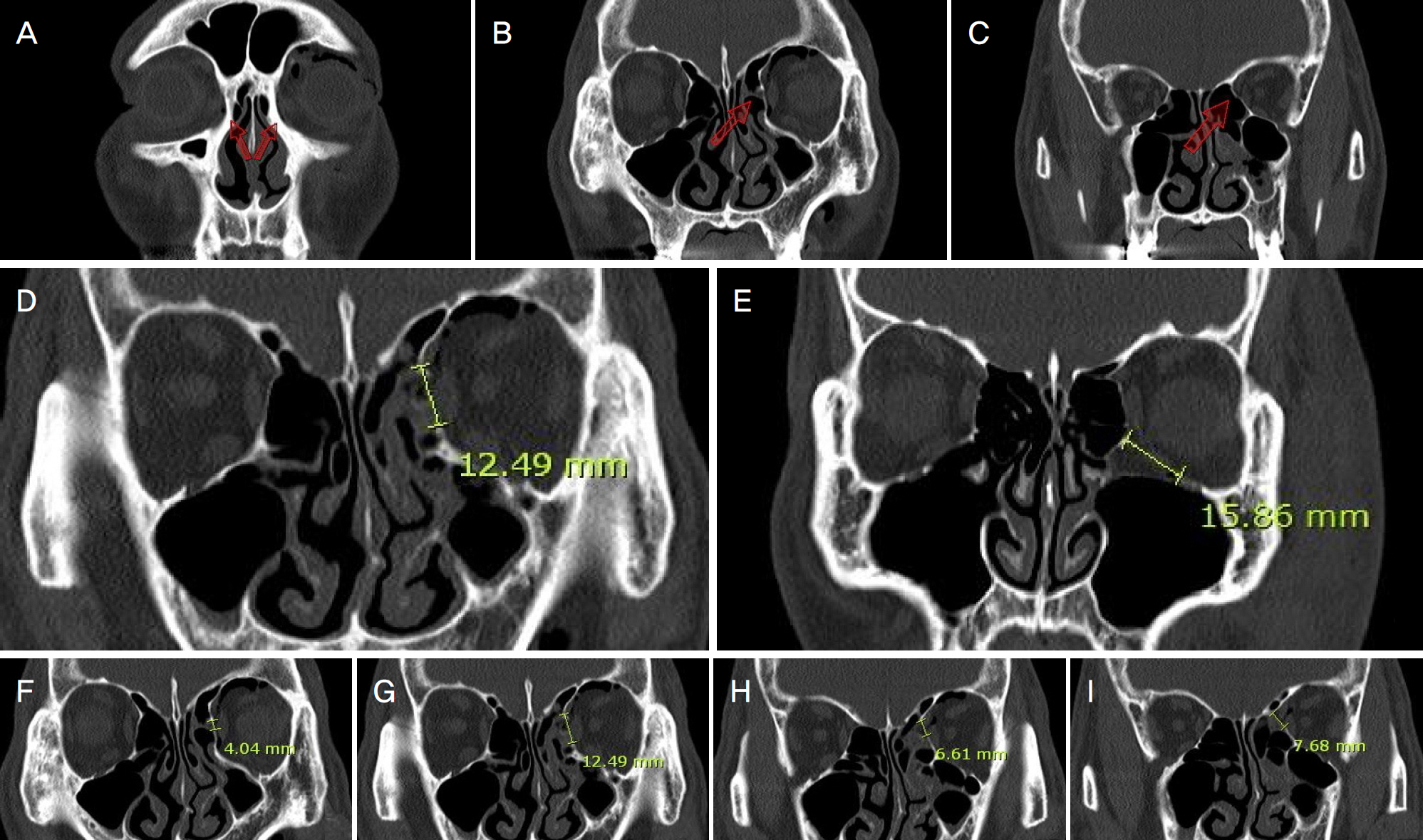J Korean Ophthalmol Soc.
2016 Aug;57(8):1282-1286. 10.3341/jkos.2016.57.8.1282.
Analysis of Ocular Complications and Blowout Fracture in Orbital Blunt Trauma
- Affiliations
-
- 1Department of Ophthalmology, Kosin University College of Medicine, Busan, Korea. hhiatus@gmail.com
- KMID: 2349076
- DOI: http://doi.org/10.3341/jkos.2016.57.8.1282
Abstract
- PURPOSE
To help predict the severity of ocular complications in orbital blunt trauma by analyzing clinical features of ocular complications and orbital wall fracture.
METHODS
A retrospective survey consisting of 169 eyes of 168 patients with orbital blunt trauma who visited Kosin University Gospel Hospital was performed. The patients' age, gender, height, weight, cause of accident, and ocular complications were investigated. The patients were imaged using computer tomography and divided into two groups according to whether they had orbital wall fracture: the orbital contusion group and the orbital wall fracture group. Variables of orbital wall fracture, including the location, length, width, and area were measured using computer tomography in the orbital wall fracture group.
RESULTS
The incidence of ocular complication was 27 of 67 eyes (40.2%) in the orbital wall fracture group and 75 of 102 eyes (73.5%) in the orbital contusion group; ocular complications were found significantly more often in the orbital contusion group than in the orbital wall fracture group (p < 0.001). Among causes of the accident, 'flying object' showed the highest incidence of ocular complication at 40 of 48 eyes (85.1%). In the orbital wall fracture group, there was no significant difference in orbital fracture location, length, width or area between the ocular complication group and the non-ocular complication group.
CONCLUSIONS
Ocular complications were found significantly more often in the orbital contusion group than in the orbital wall fracture group, and 'flying object' showed the highest incidence of ocular complication among causes of the accident.
Keyword
Figure
Reference
-
References
1. Kreidl KO, Kim DY, Mansour SE. Prevalence of significant abdominal sequelae in blunt orbital trauma. Am J Emerg Med. 2003; 21:525–8.2. He D, Blomquist PH, Ellis E 3rd. Association between ocular abdominal and internal orbital fractures. J Oral Maxillofac Surg. 2007; 65:713–20.3. Lee TS, Kellman R, Darling A. Crumple zone effect of nasal cavity and paranasal sinuses on posterior cranial fossa. Laryngoscope. 2014; 124:2241–6.
Article4. Mellema PA, Dewan MA, Lee MS, et al. Incidence of ocular injury in visually asymptomatic orbital fractures. Ophthal Plast Reconstr Surg. 2009; 25:306–8.
Article5. Cook T. Ocular and periocular injuries from orbital fractures. J Am Coll Surg. 2002; 195:831–4.
Article6. Shin JW, Lim JS, Yoo G, Byeon JH. An analysis of pure blowout fractures and associated ocular symptoms. J Craniofac Surg. 2013; 24:703–7.
Article7. Lee JS, Lee H, Shin H, et al. Significant intraocular sequelae in abdominalal blunt trauma and their association with blowout fracture. J Korean Ophthalmol Soc. 2012; 53:613–7.8. Waterhouse N, Lyne J, Urdang M, Garey L. An investigation into the mechanism of orbital blowout fractures. Br J Plast Surg. 1999; 52:607–12.
Article9. Nagasao T, Miyamoto J, Jiang H, et al. Interaction of hydraulic and buckling mechanisms in blowout fractures. Ann Plast Surg. 2010; 64:471–6.
Article10. Rhee JS, Kilde J, Yoganadan N, Pintar F. Orbital blowout fractures: experimental evidence for the pure hydraulic theory. Arch Facial Plast Surg. 2002; 4:98–101.
- Full Text Links
- Actions
-
Cited
- CITED
-
- Close
- Share
- Similar articles
-
- Foreign Body in the Orbit Associated with Blowout Fracture: A Case Report
- Two Cases of Orbital Blowout Fractures with Extraocular Muscle Entrapment in Children
- Significant Intraocular Sequelae in Orbital Blunt Trauma and Their Association with Blowout Fracture
- Management of Orbital Blowout Fractures: ENT Surgeon's Perspective
- Surgical Repairment of 3 Cases of Blowout Fracture


